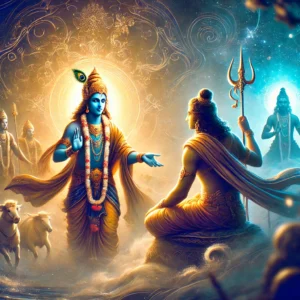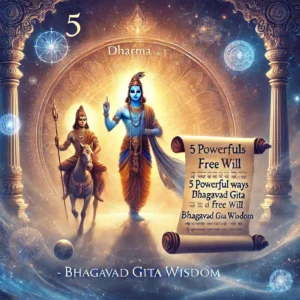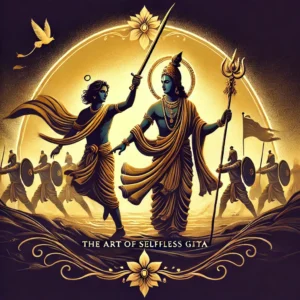The Bhagavad Gita on Karma & Reincarnation: 3 Powerful Lessons
The Bhagavad Gita’s Perspective on Karma and Reincarnation
Introduction
The Bhagavad Gita, one of the most profound spiritual texts, provides deep insights into the laws of karma (action) and reincarnation (rebirth). It explains how our actions shape our destiny and influence the cycle of birth and death. Understanding these concepts can help us lead a more meaningful and purposeful life.
This blog explores the three types of karma, the concept of reincarnation, and how one can break free from this endless cycle to attain moksha (liberation).
Understanding Karma in the Gita
Karma is a fundamental principle in the Bhagavad Gita. It refers to the law of cause and effect, where every action has consequences. According to the Gita, there are three types of karma:
1. Karma (Right Action)
This refers to selfless and righteous actions performed without any selfish motives. When we act according to dharma (duty) and align with higher moral principles, we accumulate good karma, leading to positive outcomes in this life and beyond.
2. Vikarma (Wrong Action)
These are actions driven by greed, selfishness, and harm to others. Engaging in adharmic (unrighteous) acts results in negative karma, which leads to suffering and rebirth in lower states of existence.
3. Akarma (Inaction or Non-attachment to Action)
This is the highest form of karma, where a person performs their duties without attachment to the results. It is the path of karma yoga, as taught by Lord Krishna to Arjuna. By practicing detachment from the fruits of actions, one can free themselves from the cycle of karma.
Reincarnation According to the Gita
The Bhagavad Gita explains reincarnation as the continuous journey of the soul (atma) through different lifetimes. Lord Krishna tells Arjuna:
“Just as a person discards old clothes and wears new ones, the soul discards old bodies and takes new ones.” (Bhagavad Gita 2.22)
The body is temporary, but the soul is eternal. After death, the soul takes a new form based on its accumulated karma. This cycle of birth and rebirth continues until the soul attains liberation (moksha).
How Past Actions Shape Future Lives
The Bhagavad Gita emphasizes that our current life is the result of past karma, and our present actions will shape our future lives. The quality of our thoughts, words, and deeds determines our next birth.
-
Good karma leads to birth in a higher spiritual state or a noble family
-
Bad karma results in difficult circumstances or lower life forms
-
Selfless karma (without attachment) leads to moksha (freedom from rebirth)
This law of karma ensures justice and accountability in the universe. No effort goes unnoticed, and no wrong goes unpunished.
Breaking the Cycle of Birth and Death
The ultimate goal in the Bhagavad Gita is liberation from the cycle of birth and rebirth. Krishna teaches that moksha is achieved through:
1. Bhakti Yoga (Path of Devotion)
Devotion to God with pure love and surrender can liberate the soul. Krishna says:
“Those who surrender unto me never take birth again in this world of suffering.” (Bhagavad Gita 4.9)
2. Jnana Yoga (Path of Knowledge)
By realizing the eternal nature of the soul, one overcomes ignorance and attains liberation.
3. Karma Yoga (Path of Selfless Action)
Performing duties without attachment to results burns past karma and leads to spiritual freedom.
4. Dhyana Yoga (Path of Meditation)
Deep meditation helps the soul detach from worldly illusions and connect with the Supreme Consciousness.
Conclusion
The Bhagavad Gita offers timeless wisdom on karma and reincarnation. It teaches us that our actions define our destiny and that liberation is possible through selfless service, devotion, and wisdom.
By understanding these principles, we can lead a purposeful and dharmic life, ultimately achieving freedom from the cycle of birth and death.
Would you like to explore more about practical ways to apply karma yoga in daily life? Let me know in the comments!
you may also read…..https://dayinspirehub.com/3-nishkama-karma-the-art-of-selfless-action/
https://dayinspirehub.com/5-powerful-ways-to-balance-dharma-and-free/




